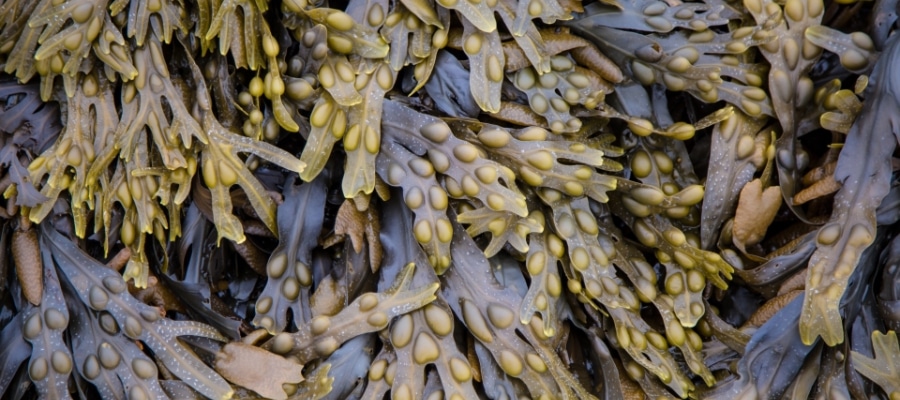What kind of innovation would both improve food security and fight climate change? Sahil Shah thinks he has the answer: seaweed.
Many varieties of seaweed are already widely consumed in the East. In the West, consumers were introduced to seaweed largely through the rise of Japanese cuisine. The dried paper-like green variety nori is wrapped around rice to hold sushi rolls together, and flavored nori packets are now sold as snacks in the potato chip aisles of American and European grocery stores. A larger leafy brown seaweed called konbu is used both as a flavoring and occasional ingredient in miso soups. Packed with nutrition, seaweed has great untapped potential to transform the world’s agriculture and food supply chain, Shah believes. He and his partners have launched Sustainable Seaweed in a bid to improve and expand seaweed cultivation at the community level while broadening its appeal and consumption everywhere, including in developing countries.
Sustainable Seaweed is eyeing opportunities across the globe, but Shah is particularly active on the major islands of Indonesia, where seaweed cultivation is in need of some innovation. “Close to 40% of the world’s seaweed is actually grown out of Indonesia,” Shah told Grow Further. Yet the industry is largely stuck using labor-intensive growing and harvesting methods that limit productivity and quality. There’s much room for improvement. “There are aspects across the whole supply chain”, Shah explained, listing as areas of potential seaweed farming improvement “everything across from the supply of seeds and the seeding, through mechanization of harvesting, to using data”.
But aside from sushi rolls, will there be demand for more seaweed worldwide going forward? Shah says yes. Seaweed is rich in iron, iodine, and other nutrients, and he believes it’s only a matter of time before governments and households alike recognize its power to greatly improve public nutrition and health, especially in places struggling with food insecurity. Seaweed grows quickly. It can be dried and stored cheaply for long periods of time. It can even be transformed into a biofuel, and is attracting attention as a possible means for carbon sequestration. In 2016, an Algerian researcher published a paper exploring seaweed’s potential as a biofertilizer, finding great promise there as well. The geographic reach of seaweed farming is also expanding. Shah pointed to examples of up-and-coming seaweed farming sectors beyond Asia, including rising cultivation in Tanzania and Chile, and an experiment in Madagascar which he admits “has a long way to go”. Sustainable Seaweed is aiming to launch its own seaweed farms in the United Kingdom but is having difficulty clearing red tape and convincing regulators who are unfamiliar with the industry and the product.
Seaweed farming is far more developed and organized in Southeast Asia in general, and Indonesia in particular. There, cultivation is community-led, with villages divvying up offshore blocks to individual farmers or families. Collaboration and shared support help to ensure successful harvests, but even Indonesian seaweed farmers can use some support to build upon their successes. For instance, Indonesia’s seaweed farms tend to harvest too early, limiting production potential. They’re also in the habit of remaining close to shore. “Most seaweed in Indonesia at the moment is grown in the intertidal zone and that has issues when it comes to crop quality, exposure to sun, and rising seawater temperatures”, Shah explained. “Shifting production slightly deeper offshore—we’re looking at the three-to-five-meter water depth—has substantial benefits, and it opens up more of the ocean to seaweed farming”.
The COVID-19 pandemic dealt a blow to Sustainable Seaweed’s plans and vision. Shah said he would be busy investing in seaweed innovation in Indonesia today were it not for the crisis, which forced his early departure back in March 2020. He’s eager to return to Indonesia and resolve still lingering questions. “How do I reduce the labor component needed for my seeding?” he asked. “How do I reduce that for harvesting? What types of machinery can I use?”
“Those are the main things that we are really looking at”, Shah said. “There are a number of innovations across the supply chain which to a certain extent have been used for land-based agriculture which are yet to be used for aquaculture, and seaweed in particular”.
Seaweed cultivation, while it has great potential, represents an overlooked area of agriculture, and is thus just the type of area where Grow Further might support innovation.
— Grow Further




